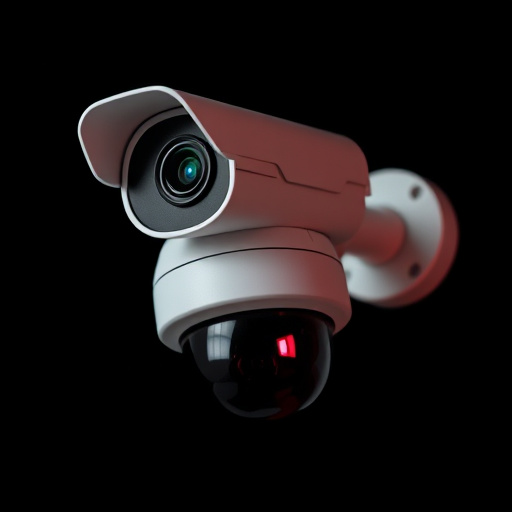A Dummy Dome Camera Installation Guide aids in securing properties with strategic camera placement for maximum coverage and discreetness. Consider area layout, aesthetics, and tools for optimal positioning based on environment and regulatory compliance. Cameras near entrances, windows, and gathering points deter intruders while providing clear, detailed surveillance footage. Integration into natural cover spots enhances security without compromising privacy.
“Maximize security with our comprehensive Dummy Dome Camera Installation Guide. Learn the art of strategic placement, from evaluating locations for optimal coverage to selecting dome styles that harmonize with your environment. Discover essential installation basics, including tools and techniques, to ensure a successful setup. Master positioning for flawless visuals and enhance discreetness through seamless integration into your surroundings. Elevate your surveillance game today!”
- Evaluating Location: Choose Strategically for Maximum Coverage
- Dome Selection: Matching Camera Style to Environment
- Installation Basics: Tools and Techniques for Success
- Positioning for Optimal Visuals: Height and Angle Matters
- Enhancing Discreetness: Blending into the Surroundings
Evaluating Location: Choose Strategically for Maximum Coverage
When evaluating locations for dummy dome camera installation, it’s crucial to consider factors that ensure maximum coverage and security. Start by assessing the area’s layout and potential blind spots where crime could occur unnoticed. Strategically place your dummy cameras in areas visible from multiple angles, mimicking actual surveillance points. This includes positioning them near entrances, exits, windows, and common gathering points within the monitored premises.
By selecting these locations thoughtfully, you create a layered defense that discourages would-be intruders and provides comprehensive visual coverage. A Dummy Dome Camera Installation Guide can offer detailed insights into optimal placement for different scenarios, ensuring that every corner of your property is watched, enhancing security, and deterring potential threats effectively.
Dome Selection: Matching Camera Style to Environment
When it comes to dummy surveillance camera placement, selecting the right dome style is crucial for a seamless integration into your environment. Different environments demand diverse camera aesthetics—whether it’s a modern urban setting or a rustic rural area. Choosing a dummy dome camera that matches your surroundings ensures a more convincing and effective setup.
For instance, if you’re installing cameras in a bustling city center with numerous high-rise buildings, opt for a sleek, compact dome design that blends in with the urban landscape. Conversely, in open countryside or suburban areas, larger dome cameras with subtle textures can be more appropriate, minimizing their visual impact on the natural setting. Following a Dummy Dome Camera Installation Guide tailored to your environment ensures both functionality and aesthetic harmony.
Installation Basics: Tools and Techniques for Success
When it comes to installing a dummy dome camera, having the right tools and understanding basic techniques can make all the difference in achieving optimal results. A typical Dummy Dome Camera Installation Guide involves gathering essential equipment such as screwdrivers (both flathead and Phillips), wire strippers, pliers, and a level. These tools are crucial for securing the camera, running cables, and ensuring proper alignment.
Begin by assessing the location where you want to place the dummy camera. Use your level to ensure it’s perfectly straight, especially if installing on walls or ceilings. Next, carefully drill pilot holes for screws, taking care not to damage any underlying structures. This meticulous approach guarantees a solid foundation for your camera. After securing the camera body, run cables discreetly to avoid unsightly appearances, following local building codes and regulations throughout the process.
Positioning for Optimal Visuals: Height and Angle Matters
When installing a dummy dome camera, understanding optimal visual coverage is key. The height at which the camera is placed significantly impacts the quality and clarity of footage. Ideally, position the camera at eye level or slightly elevated to capture a comprehensive view. This ensures that the field of view isn’t obstructed by ceiling fixtures or other objects, providing clear and detailed surveillance.
The angle of the camera also plays a crucial role. A slight downward tilt can help in capturing license plates or facial features accurately, while a horizontal orientation ensures a panoramic view. Following a dummy dome camera installation guide that accounts for these adjustments will ensure you maximize the visual potential of your surveillance system.
Enhancing Discreetness: Blending into the Surroundings
When installing a dummy dome camera, enhancing discreteness is key. To ensure optimal effectiveness, strategically place your camera so that it blends seamlessly into its surroundings. Opt for locations with natural cover, like under eaves, behind bushes, or within corners, to avoid drawing unwanted attention. A well-positioned dummy dome camera should appear almost invisible, allowing you to capture footage without raising suspicion.
Remember, the goal of a dummy surveillance camera is to serve as a deterrent and gather evidence discreetly. By carefully considering its placement and integrating it into the environment, you can create an effective security system that remains unnoticed, providing peace of mind and increased safety. This blend between technology and camouflage is what makes a dummy dome camera installation guide invaluable for anyone seeking enhanced security without the intrusion of a visible surveillance setup.
A well-placed dummy surveillance dome camera can significantly enhance security while maintaining a discreet presence. By strategically evaluating locations, selecting the right dome style, and mastering installation techniques, you can create an effective security system that blends seamlessly into your environment. Remember, optimal positioning, both in terms of height and angle, is key to achieving clear visuals, ensuring a secure space, and making potential intruders think twice.
